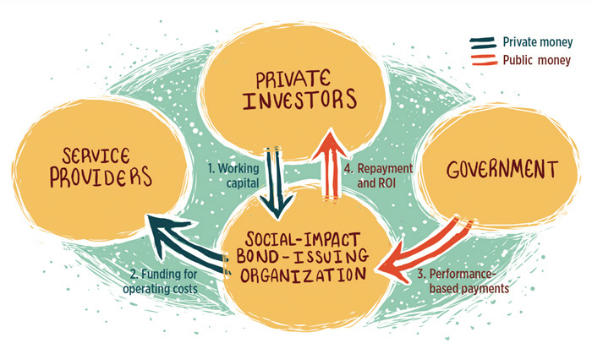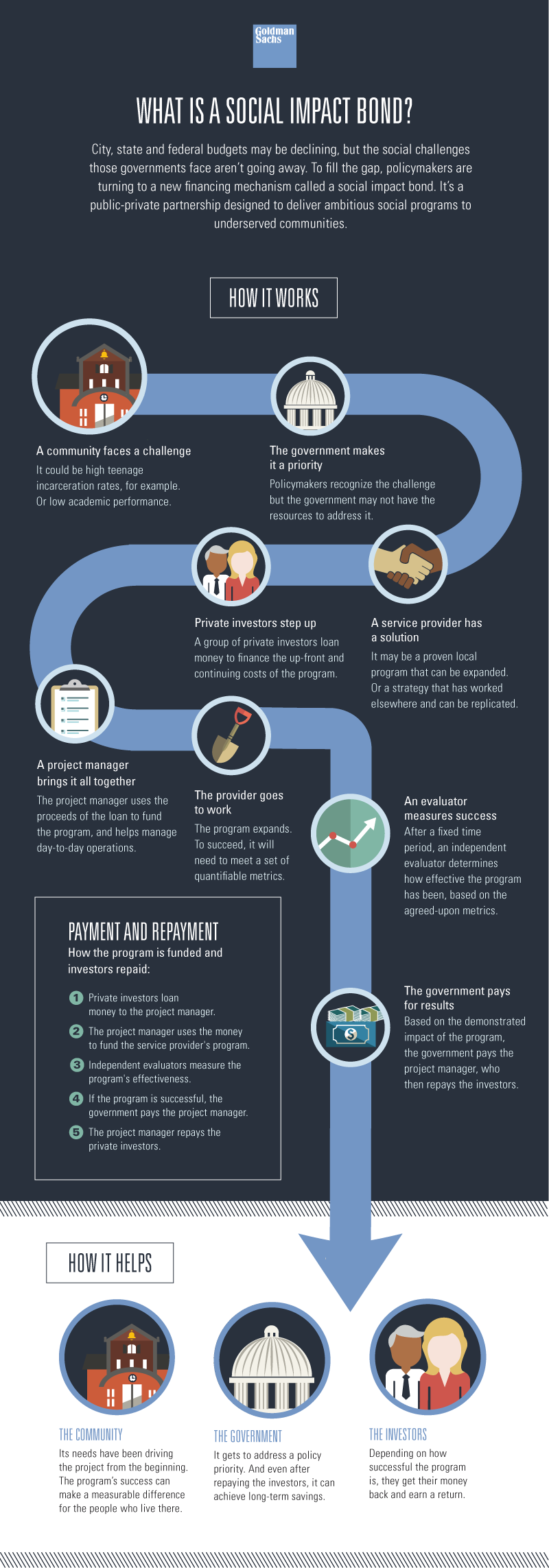Have you heard about social impact bonds (SIBs) yet? If not there are a lot of resources and discussion out there regarding this magical fix of financial woes of government. While many have viewed these as too good of an opportunity to pass up (for example, see here and here), others have been slightly more skeptical.
Here is a nice summary of three common mistakes about SIBs to provide some additional background, like they are not bonds.
What are SIBs? Well basically they are a form of impact investing, which allows for increased investment in social programs from the private sector. A private financing is used to implement a new program that is intended to address specific social outcomes for marginalized or at risk populations. The goals (or outcomes) are determined before the intervention and if they are not met by the program than the government does not have to repay the investors. If they are met (i.e., the pay for success) than the government pays back the investor and a return for the private sector (who is motivated to do this by profit and social good). So in essence it allows for the public sector to take risk and innovate without financial risk.
For information from the architects (and advocates) of SIBs starting with Social Impact Bonds: A Guide for State and Local Governments prepared by the Harvard Kennedy School is a good choice.
How to conceptualize Social Impact Bonds?
Or as Goldman Sachs (a pioneer in this area) describes it:
Sounds great, right? Well SIBs have their share of critics. In fact, a great deal of the academic literature is not favorable towards SIBs, which may surprise many of you. SIBs are innovative, they allow governments to try new things with less risk, and they are data driven policies–isn’t that what your professors back in school encouraged you to do? This blog is not going to debate the issue, I will not take sides, I will present you with some of the concerns that the literature has presented regarding SIBs.
Like everything using performance targets, how those targets are established and whether they are measuring the right thing is critical. Since these targets/outcomes are defined on the front end, the intervention will likely focus on meeting those targets–because that is how success (and thus payment) will be decided. This allows for the potential of gaming both the targets on the front end and the intervention.
Additionally, they may or may not be saving money. The literature has defined two substantial ways that they may not provide the promised cost savings. First, they are complicated legal arrangements and that is expensive to negotiate and administer. Second, many of the SIBs are invested in because they are actually not that risky. Frequently there is substantial evidence that the intervention will succeed. While we clearly want to be investing in good programs, if we (governments) are paying a large premium to avoid any risk of failure when that risk is already low, that will end up costing more money than it saves.
Finally, there is the concern that it makes these issues, people, problems a commodity. That putting financial values on all social problems and on different populations may make the system too transactional.
However, even the most adamant of critics recognize there may be a role for SIBs. If the SIB is using log-term objectives to build a systematic change. The SIBs success can then be used to move the conversation forward at a broader (for example, statewide) scale. For example, South Carolina’s ECE SIB has been viewed as very successful. In part, the return on private investment was also lower and they were able to scale it up.
One of the leading academics who is voicing concerns regarding the use of SIBs is Mildred Warner and her work shaped the concerns shared in this blog post. If interested in the not so rosy side of SIBs here are a few references:
Warner, Mildred E. “Private finance for public goods: social impact bonds.” Journal of economic policy reform 16.4 (2013): 303-319.
Tse, Allison E., and Mildred E. Warner. “The razor’s edge: Social impact bonds and the financialization of early childhood services.” Journal of Urban Affairs (2018): 1-17.
Dr. Warner also recommends the documentary The Invisible Heart.
Once again, there are also passionate advocates for SIBS—this blog is written under the presumption (based on conversations with folks) that you have likely heard more from the advocates than the skeptics. There are great possibilities with this model, it is just important to (like with any other tool) to carefully consider when it is appropriate.






Leave a Reply